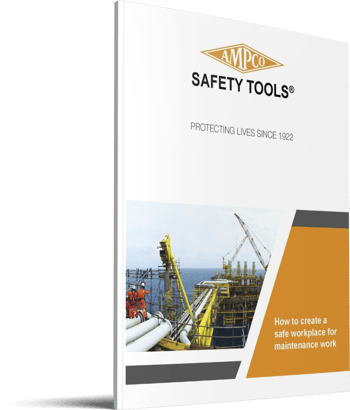Creating standard maintenance procedures (SMPs) takes time and effort. Could it still be worth it? The answer is Yes. Read our blogpost to find out how it increases efficiency and safety.
A standard maintenance procedure can be defined as a list of steps that describes how to do a maintenance task. It also serves as a documented standard for the task in question. As a general rule, all repetitive maintenance tasks should be coded into SMPs. But why should they? Are standard maintenance procedures more than just an unnecessary bureaucratic hassle? In the following paragraphs, we will explain to you why standard maintenance procedures benefit their users in many ways.
The many advantages of standard maintenance procedures
If you create standard maintenance procedures, you have the chance to capture the best knowledge and practices relating to your subject matter and make them available to all your workers. If you don't have any procedures, your workers will develop their own working routines, some better, some worse. Once you have established official maintenance procedures based on the best knowledge about how to perform the work, everyone will work as efficiently as possible, which will benefit your company immensely.
Having SMPs also makes your workplace safer because it doesn't just tell your workers how to do their job best. A good procedure also informs workers on the dangers of their work and how to best avoid them and reduce the risk of injury. Procedures also save time because you don't have to rely on the memory of individual workers or the intuition of new workers when it comes to figuring out how to best complete a routine task. And if you create your procedures in line with official standards and regulations, you are also ensuring that these will be met by everyone all the time.
If you have SMPs, the work will also be done consistently, which gives you the ability to better quantify what's being done and makes improving the processes in the future easier. As you quantify the tools, parts and supplies necessary for the work, job planning also becomes easier to do. You will also find the causes of failures more easily. Plus, procedures make scheduling technicians simpler. Oftentimes, maintenance departments will schedule work around certain technicians who are experts on a particular piece of equipment. Repairs can be moved up or delayed in the process. SMPs prevent this, making it possible for any competent technician to perform the work right.
Making your workplace more efficient and safer
If you want to create standard maintenance procedures, you will need to collect the knowledge of your coworkers and work with subject matter experts, especially the people who will be working according to your SMPs. If you have someone with experience related to standard procedures, get these people involved. Once the procedures are completed, put some effort into implementing and disseminating them in a way that makes them understandable, attractive and easily accessible to your workforce. You could attach them to work orders, post them at machines or at the operator station.
Standard maintenance procedures are a great way to improve efficiency and safety in your workplace. If you are looking for more ways to improve, you may be interested in contacting AMPCO SAFETY TOOLS. We specialise in the manufacture of non-sparking tools that are designed with the requirements and challenges of maintenance work in mind. If you would like to know more, do not hesitate to contact us.
Download our whitepaper "How to create a safe workplace for maintenance work" right now for free.




